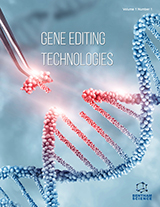Abstract
Considerable interests and widespread studies in the development of biodegradation of plastic materials have been carried out in order to overcome the environmental problems associated with petrochemical plastics waste. Among the various biodegradable polymers, poly(3-hydroxybutyrate) (PHB) is an attractive substitute for conventional petrochemical plastics due to similar properties to thermoplastics and elastomers, and complete biodegradability upon disposal under various environments. PHB is the most famous member of polyhydroxyalkanoates (PHAs) and can be accumulated as an intracellular carbon/energy source for various microorganisms. Synthesis of these distinct granules occurs when there is a growth limiting component in the presence of excess carbon source. The use of PHB in a wide range of applications has been hampered mainly by their high production cost compared with petrochemical based polymers. The fermentation performance, carbon substrate, the isolation of new microorganisms with high growth rate and potential of production as well as yield and recovery method affect the production cost of PHB. To overcome mentioned problems, knowing the specific strategies such as controlled systems is necessary. In controlled cultivation- and production systems like bioreactors, high cell density occurred. Hydrodynamic and mass transfer behaviors are important in gas liquid bioreactors. Oxygen transfer and residence time distribution must be monitored on-line. The mixing characteristics of gas liquid bioreactors are often intermediates between the characteristics of plug-flow and well mixed flow. This phenomenon is modeled using two methods: the axial dispersion model and tanks-in series model. In this chapter after a glance introducing of PHB and producing bacteria which grow on different carbon sources in batch, fed-batch, and continuous systems have been reviewed and compared to each other from the productivity point of view. Also, a special interest has been done on inhibition kinetics as well as modelling of gas and mass transfer in different bioreactors.
Keywords: Axial dispersion model, Bioreactor cascade, Bioreactors, Fed-batch cultivation, Fermentation, Forced-liquid bioreactors, Hydrodynamics, Mass transfer behavior, On-line monitoring, Polyhydroxyalkanoates (PHA), Poly(3- hydroxybutyrate) (PHB), Process design, Tanks in a series model.






















